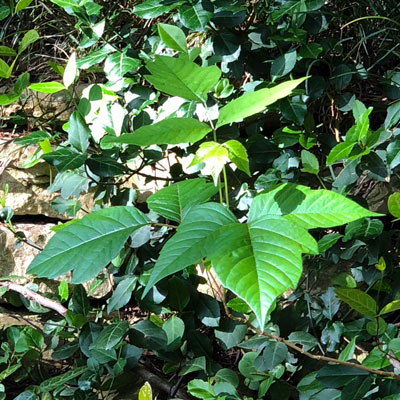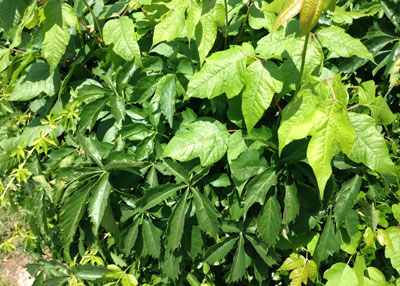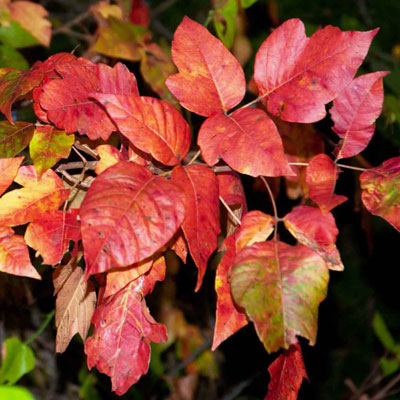Question of the Week – Number One: April 29, 2021
“How can I identify poison ivy in my groundcover beds and shrubs?”

The old saying we all learned as children, “Leaves of three, let it be.”
That’s referring to the fact that poison ivy has three leaflets per leaf.
Not five leaflets per leaf like the vine called Virginia creeper.

And not on a straight-growing tree seedling of a box elder tree. They look remarkably like poison ivy seedlings until you look at the stems and realize that box elders’ stems are always going to be holding their leaves erect, while poison ivy starts vining almost immediately.
Things to know about poison ivy…
These are facts you can trust.
• Everyone is susceptible to poison ivy allergies at some point in his or her life. It can happen at a time when your immune system is fighting off a cold or other illness or when you’re tired. But don’t assume that “I don’t get poison ivy,” because you might.
• If someone in the family is less likely to develop a poison ivy allergic reaction, that person might be the designated gardener who gets to help remove it.
• It’s the oil in the plant tissues that give the allergic reaction.

• All parts of the plant contain that oil, so all parts of the plant can cause allergic reaction. That includes leaves, flowers, fruit, stems and even roots. Even the smoke from burning the vines.
• The oil can be transferred from the plant to your clothes, then onto your skin.
• Wear long sleeves and long pants, closed shoes and socks and disposable or washable gloves when you work with poison ivy.
• Be aware of oil spewing when you use an axe to cut poison ivy stems. Be aware of sawdust when you saw it.
• As soon as you finish working around it, put your clothes in the washer and put yourself in the shower. Scrub with hot water and soap.

If you’re able to spray poison ivy…
• Broadleafed herbicides containing 2,4-D will kill poison ivy when applied to vigorous new growth. Use a pump sprayer for more precise application, and include one drop of liquid dishwashing detergent per gallon of mixed spray. Coat the leaves thoroughly, then wait 10-15 days to monitor results.
• Keep the spray off desirable foliage nearby to avoid damage to nearby trees, shrubs and groundcover plantings.
• If you have poison ivy growing high into established trees, cut the vine off at the ground. That will kill the top growth. Just leave it hanging in place. Do not try to remove it. It will dry and gradually release its hold on the trunk and branches, and pieces will fall to the ground.
• Meanwhile, macerate the stumps and pour the undiluted broadleafed weedkiller onto them at full strength. It will soak into the wood and kill the roots of the poison ivy so that they won’t send up new shoots.
Do we have poison oak here in Texas?
No. In fact, “poison oak” is just a relative of poison ivy and not a true oak at all. It’s native to the West Coast. What we have in Texas is basically the one species, Toxicodendron radicans.
